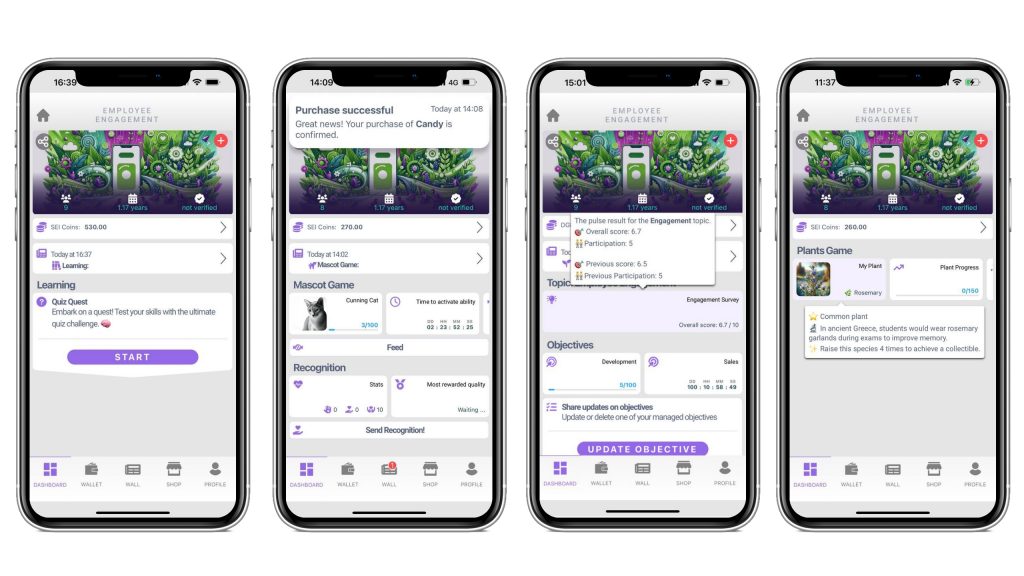Introducere
Effective contact center capacity planning is crucial for managing customer interactions, ensuring optimal resource utilization, and maintaining high service levels. As we approach 2024, the complexities of capacity planning are increasing, requiring more sophisticated approaches and tools. This article provides a comprehensive guide to contact center capacity planning and explores how innovative solutions like More Gamification can help enhance performance and efficiency.
Understanding Contact Center Capacity Planning
Capacity planning in contact centers involves forecasting call volumes, determining staffing requirements, and scheduling resources to meet service level objectives. The goal is to ensure that the right number of agents are available at the right times to handle customer interactions efficiently.
Key Components of Effective Capacity Planning
Accurate Forecasting
Accurate forecasting is the foundation of effective capacity planning. This involves analyzing historical data, identifying trends, and predicting future call volumes. Factors such as marketing campaigns, product launches, and seasonal variations must be considered.
Workforce Management
Workforce management is critical for aligning staffing levels with forecasted demand. This includes:
- Recruitment: Hiring the right number of agents to meet anticipated call volumes.
- Scheduling: Creating schedules that match agent availability with peak call times.
- Training: Ensuring agents are adequately trained to handle various types of interactions.
Real-Time Monitoring
Real-time monitoring allows contact centers to track performance metrics and make immediate adjustments. This includes:
- Queue Management: Monitoring call queues and adjusting staffing levels as needed.
- Performance Metrics: Tracking key performance indicators (KPIs) such as average handle time, first call resolution, and customer satisfaction.
Challenges in Contact Center Capacity Planning
Fluctuating Call Volumes
Unpredictable call volumes can lead to overstaffing or understaffing, impacting service levels and operational costs.
Agent Attrition
High turnover rates can disrupt capacity planning and lead to understaffing, reducing service quality.
Technological Integration
Integrating new technologies with existing systems can be challenging, requiring significant time and resources.
Strategies for Effective Capacity Planning
Advanced Analytics
Leveraging advanced analytics can improve forecasting accuracy and enable data-driven decision-making. Predictive analytics can identify patterns and trends, helping to anticipate future demand more accurately.
Flexibility in Scheduling
Flexible scheduling practices, such as split shifts and part-time work, can help manage fluctuating call volumes and improve agent satisfaction.
Cross-Training Agents
Cross-training agents to handle multiple types of interactions can increase flexibility and ensure that staffing levels remain adequate even during unexpected demand spikes.
Leveraging More Gamification for Enhanced Capacity Planning
Introduction to More Gamification
More Gamification is an innovative platform designed to enhance employee engagement and performance through gamification. It provides real-time feedback, personalized learning paths, and performance tracking to help contact centers optimize capacity planning.
Features of More Gamification
- Gamified Learning: Interactive and engaging training modules that help agents quickly acquire and retain new skills.
- Real-Time Feedback: Immediate feedback on performance, helping agents to continuously improve their skills.
- Performance Dashboards: Comprehensive dashboards that provide insights into individual and team performance, enabling better capacity planning decisions.
Benefits of Using More Gamification
- Improved Forecasting Accuracy: By analyzing performance data, More Gamification helps predict future call volumes and staffing needs more accurately.
- Enhanced Agent Engagement: Gamified elements such as points, badges, and leaderboards increase motivation and reduce attrition rates.
- Optimized Scheduling: Insights from performance data allow for more effective and flexible scheduling, ensuring the right agents are available at the right times.

Concluzie
Effective contact center capacity planning in 2024 requires a combination of accurate forecasting, robust workforce management, and real-time monitoring. By leveraging advanced analytics, flexible scheduling, and cross-training, contact centers can better manage fluctuating call volumes and agent attrition. The innovative platform “More Gamification” provides powerful tools to enhance engagement and optimize capacity planning, ensuring that contact centers can maintain high service levels and operational efficiency.


